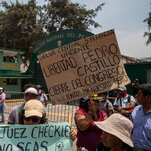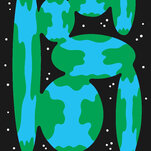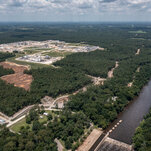
Protesters in Peru Demand Justice for Ousted President Pedro Castillo

Eight days after Pedro Castillo’s removal from office and arrest, thousands of his supporters have joined protests demanding his reinstatement. To them, he is the voice of the marginalized.

LIMA, Peru — Outside a prison at the foot of the Andes Mountains, a camp has formed in recent days, with as many as 1,000 people traveling hundreds of miles to demand freedom for the highest-profile detainee: their former president, Pedro Castillo.
They will stay until he is reinstated, said one supporter, Milagros Rodriguez, 37, or until “civil war begins.”
Mr. Castillo, a former schoolteacher and union activist who promised to fight for the poor, is the man at the center of Peru’s dizzying political drama, having been removed from office last week after he tried to dissolve Congress and create a government that would rule by decree. Within hours he was under arrest, accused of rebellion, and his vice president was sworn into office.
Now, Dina Boluarte is the sixth president in five years in a country reeling from a long history of high-level scandals and deep divisions between its rural poor and urban elite.
What started out as a relatively peaceful transfer of power has quickly erupted into widespread violence that has left at least 16 dead, many of them teenagers, and led to attacks against police stations, courthouses, factories, airports and a military base.
During a virtual court hearing televised live on Thursday, a judge ordered Mr. Castillo be kept in pretrial detention for 18 months while his case proceeds. Mr. Castillo refused to appear at the hearing.
Image
At least 197 civilians and more than 200 police officers have been injured in clashes, according to the country’s ombudsman’s office, which in a statement Thursday called on security forces to “immediately cease the use of firearms and tear gas bombs dropped from helicopters.”
The government has responded to the unrest by imposing a national state of emergency, suspending the guarantee of many civil liberties, including the freedom of assembly. In an effort to quell the unrest, the new president has called for early elections, for as soon as December 2023, a move that Congress is debating.
Ms. Boluarte, a former ally of Mr. Castillo, has found herself increasingly at odds with the rural Peruvians who voted the two of them into office last year. On Thursday, her government expanded the state of emergency, imposing a curfew in 15 provinces.
What to Know About the Ousting of Peru’s President
Card 1 of 4
Who is Pedro Castillo? The left-wing Peruvian president was elected in 2021 after campaigning on a promise to address the country’s chronic inequality. But in less than a year and a half in office, Mr. Castillo has been plagued by corruption scandals. Peru’s Congress voted to oust him after critics accused him of attempting a coup.
“Violence and radicalism won’t end a legal and legitimate government,” she said, speaking Thursday at a graduation of military officers. “There’s no room for fear, only the bravery, unity and the hope of a country that deserves more of its politicians.”
Mr. Castillo is a leftist from an indigent farming family in the Andean highlands who had never held office before becoming president last year.
While Peru enjoyed a long stretch of commodities-driven economic success that pulled millions of people from poverty earlier this century, that wealth failed to reach much of the country’s poor, especially in rural areas that bear the brunt of Peru’s chronic inequality.
The protests over Mr. Castillo’s removal grew so quickly, many demonstrators said, because, whatever his misdeeds, he represented the voice of a swath of the population that has long felt marginalized by the elite.
“I am against the fact that my children don’t have the same opportunities as the upper class,” said Delia Minaya, 49, who had traveled an hour by car to the camp growing outside the prison, bringing with her breakfast for dozens of strangers.
She said she had spent years working at a clothing factory — pulling regular 20-hour shifts — to send her two children to private school.
Image
It wasn’t that she was a die-hard Castillo supporter, she said. But he should have had the chance to govern for people like her. “It pains me to see my brothers fighting every day for this damn system we have in Peru,” she said.
Some supporters arrived at the prison on Dec. 7, the day that Mr. Castillo was arrested. Since then, more and more have shown up and turned the area into a village where some people are now living.
There is a community kitchen under a blue tent, serving roughly 1,000 people a day, according to a volunteer cook, with donations of vegetables bulging from plastic bags all around him. Just beyond, donated mattresses are stacked at least seven feet high, while handmade signs hang all around, calling for Mr. Castillo’s freedom.
“Sellout Congress, the people reject you,” read a banner across from the prison entry.
On Thursday afternoon, a long line of police officers stood guard, protecting the prison’s giant door. Tents lined the street. And several protesters wore plastic construction hard hats — meant to protect them should they clash with the authorities.
Image
“We’re in mourning for our president,” said Ms. Rodríguez, an accountant’s assistant who had come from Junín, a town more than 200 miles northeast of Lima.
Bryan Pando, 29, a Peruvian who lives in Buenos Aires, said that he had flown to Lima the afternoon he heard of Mr. Castillo’s arrest. A medical student, he had been living at the camp ever since. More than two decades ago, his parents had emigrated to Argentina “because of the lack of possibilities in Peru.”
Now, they were comfortably middle class there, “and in this country,” he said of Peru, “almost nothing has changed.”
“Unfortunately, we are submerged in a very deep corruption,” he said. “We all seek justice,” he said of the group outside the prison. “Because what they have done to the president, our president, is a tremendous injustice.”
Protester after protester expressed deep anger at Congress and at the national news media — which many called “the mercenary press” — all of which they claimed functioned as proxies for the wealthy.
One woman bragged about setting fires in the street and overturning a car belonging to a journalist during a protest in Lima the day before. “We’re past negotiation,” she said.
Nearly everyone interviewed said they believed Mr. Castillo had been manipulated into trying to dissolve the government. “All of this was planned,” Mr. Pando said.
The manipulators, he said, were “the country’s oligopolies.”
Image
On Thursday, there were clashes between the police and security forces outside two airports, while the ombudsman’s office counted 113 road blockades and 56 marches across the country, the highest daily number since protests began.
Among those killed was a 16-year-old who was run over by a vehicle when protesters lifted a blockade in the northern region of La Libertad.
An ambulance that was taking four patients to a hospital in the Amazonian town of Puerto Maldonado was blocked and pelted with rocks by protesters on Thursday.
Shuttered airports and roads have kept Peruvians stranded around the country, leaving food bound for the capital to rot on the highways, while many foreigners were trapped in tourist spots like the Sacred Valley, home to Machu Picchu. One tourist, fearful of staying in a small town with no supplies, said that he walked 21 miles with his wife and 4-year-old son to get to a larger community.
In a speech before the country’s diplomats, Peru’s new foreign minister, Ana Cecilia Gervasi, announced that the country was summoning its ambassadors in Argentina, Bolivia, Colombia and Mexico back to Lima to protest what she called “the interference in the internal affairs of Peru.”
Days before, leaders of those four countries had issued a statement in which they condemned Mr. Castillo’s removal and appeared to recognize him as the country’s president. All four nations have leftist leaders, and are part of a wave of leftist presidents elected to power in Latin America who have tried to unite around common goals, including wresting power from the elite.
In her speech, Ms. Gervasi called for “unrestricted respect” for the law. Without that, she said, “the continuity of the nation will always be at risk.”
Genevieve Glatsky contributed reporting from Philadelphia.
Source: https://www.nytimes.com/2022/12/15/world/americas/peru-protests-pedro-castillo.html

















